By Jenny Staletovich and Patrick Farrell, WLRN News
To succeed, Everglades restoration relies on research often developed over long, arduous years by generations of scientists undaunted by some of the harshest working conditions on the planet.
They’ve braved toothy sawgrass that can shred skin, boot-sucking muck, scorching heat, mosquitoes and pythons, along with skepticism or even downright opposition to their work.
WLRN’s podcast Bright Lit Place introduces us to people who’ve spent decades waiting for progress. Those hit hardest measure losses in their checkbooks and family businesses, or even their homelands.
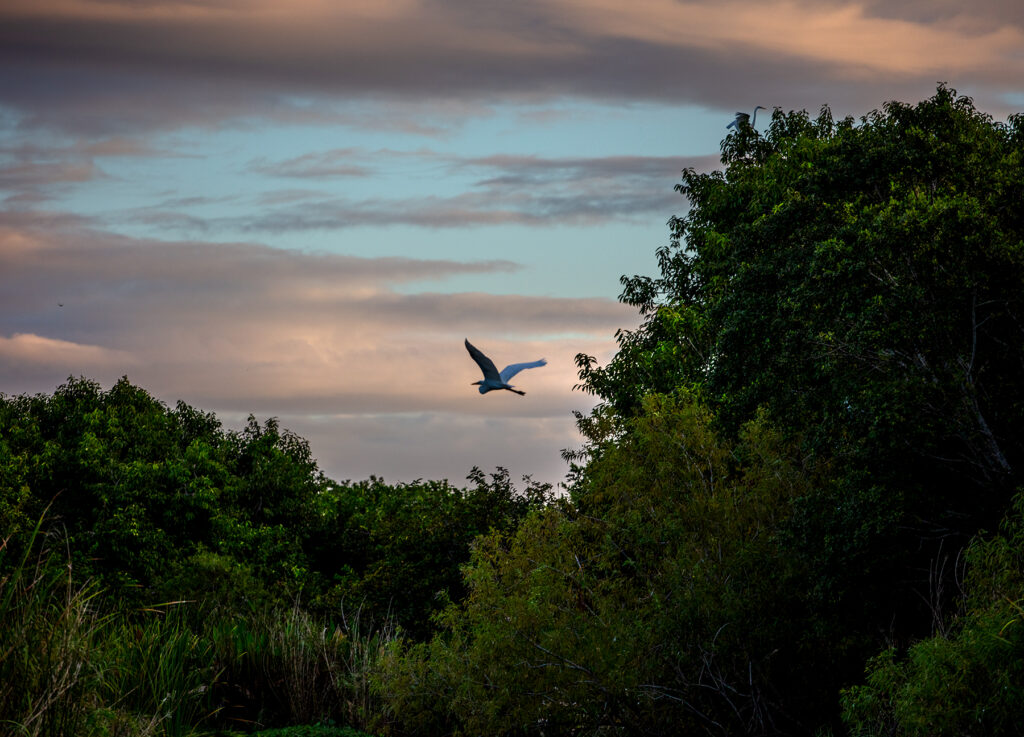
Wetlands ecologist Evelyn Gaiser
Evelyn Gaiser grew up exploring frigid wetlands in Ohio, camping along the shores of Lake Huron. South Florida lured her to its buggy marshes in the late 1990s with a chance to work in one of the world’s largest wetlands. At the time, some of the most exciting new science was unfolding in the Everglades.
“I came in at the time when we were writing the Yellow Book, the plan for fixing everything,” she said. “All these different contingencies were planned, all these complicated trade-offs were understood. People were really careful in trying to get that plan right.”
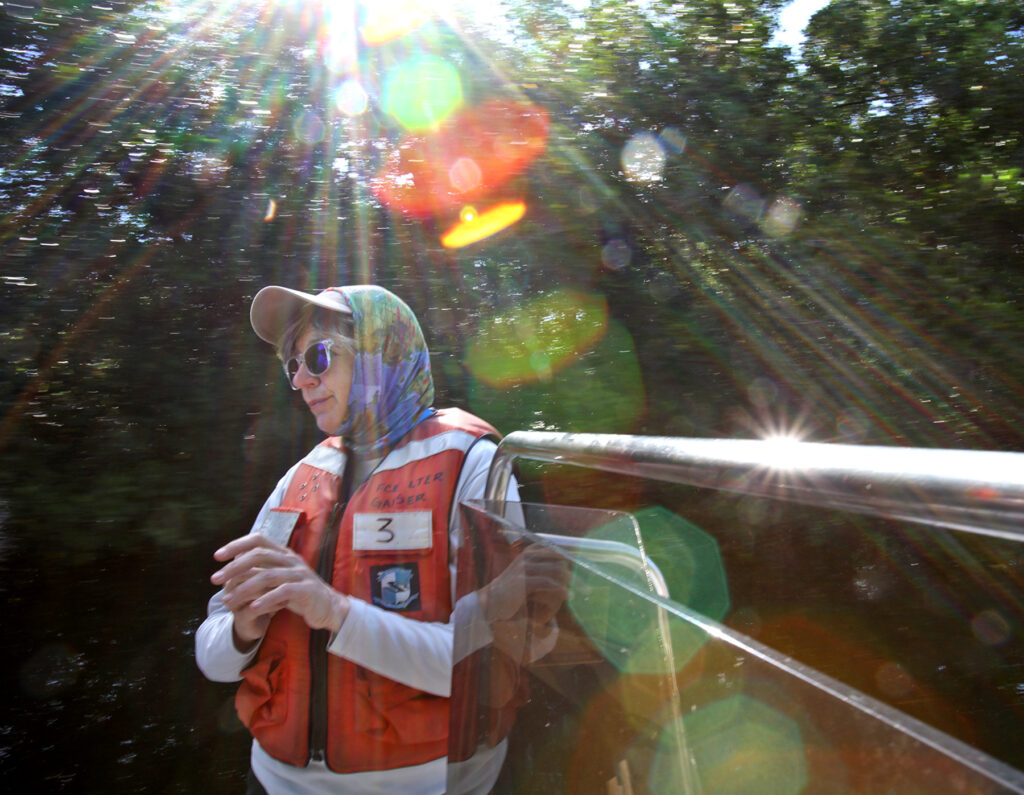
Gaiser, 56, was part of the team working with biologist Ron Jones to establish limits for phosphorus, the nutrient from fertilizer choking the marshes by fueling thick stands of cattails and killing the floating mats of periphyton that feed wildlife.
“You could fly into Miami on a plane and notice from the air these expansive areas of cattail,” Gaiser said. “Just as far as you can look, you see cattails.”
But Jones had a plan: build vast treatment marshes south of sprawling sugarcane fields where plants could soak up the nutrient pollution.
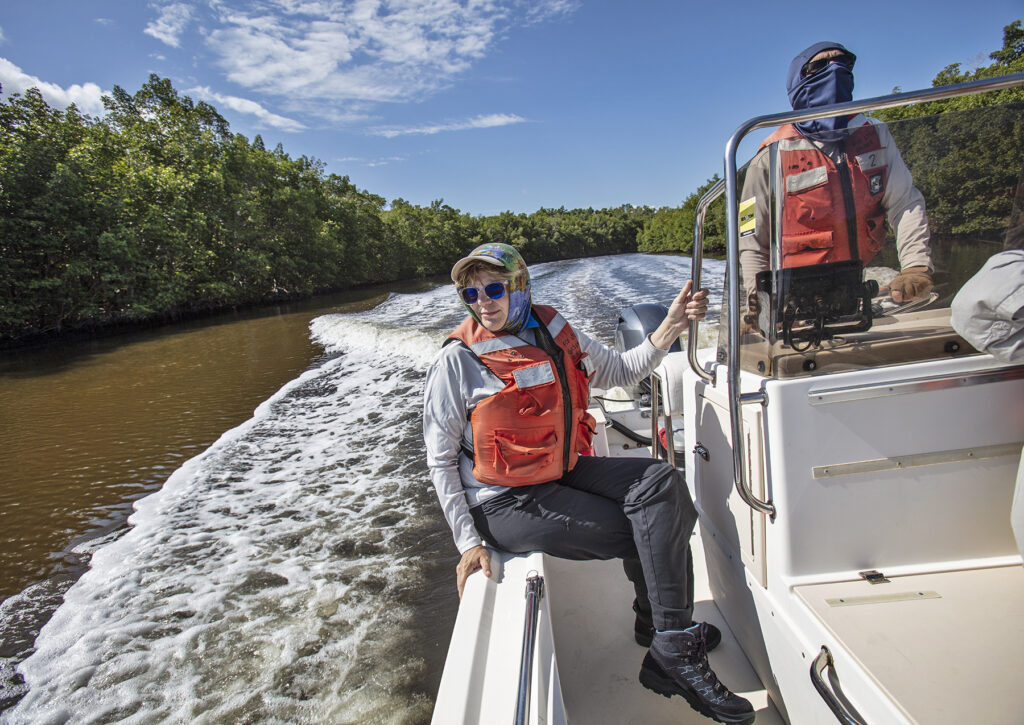
Gaiser spent the next five years studying the effects of phosphorus in a remote part of the park untouched by pollution in experimental plots as long as a football field.
“What we discovered was that that very, very low, barely measurable level of enrichment above that extremely low background level was enough to catalyze a full cascade of changes resulting ultimately in a cattail invasion into this very pristine part of the Everglades,” she said.
Evidence that even small increases in phosphorus triggered catastrophic changes confirmed the need for Jones’ costly clean-up plan. That drew fire from both the state and sugar growers.
“It was very controversial because we were going up against the interests of the agricultural industry that drives a lot of the economy in Florida,” she said.
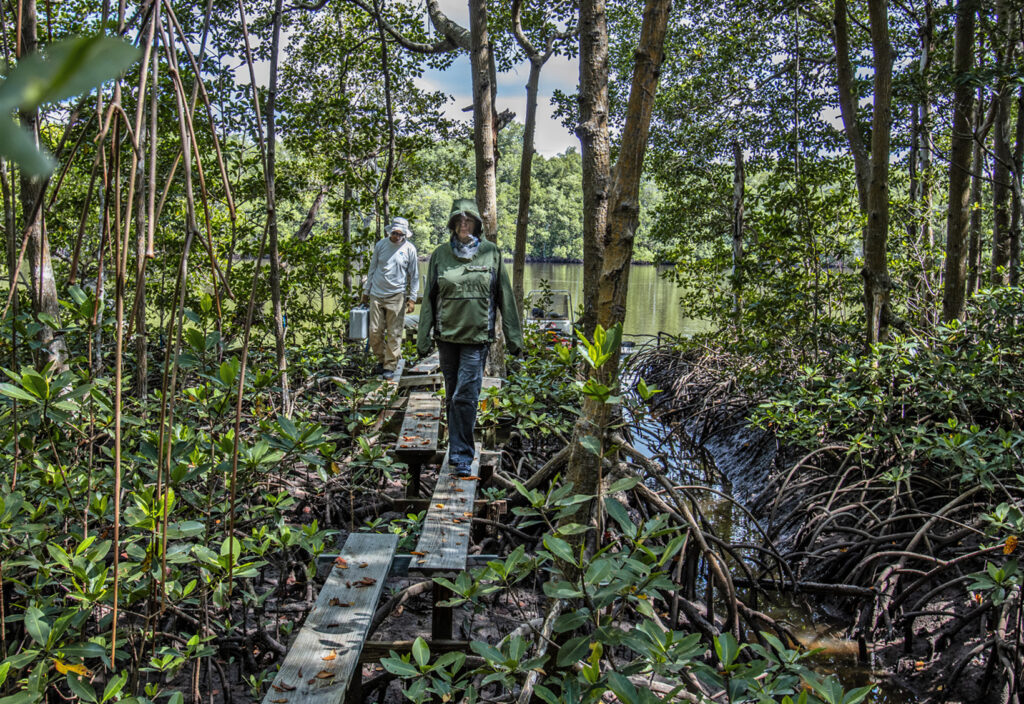
The scientists prevailed and the limit remains in place. A court-ordered deadline for the state to begin showing it will meet the limit for phosphorus pollution is set for 2025. All these years later, Gaiser is dismayed that work to reconnect the river of grass and repair the Everglades has gone so slowly.
“It’s happening in small areas, but it needs to be that on a massive scale, on the scale that, that created the problem in the first place,” she said.
You can hear more from Gaiser in episode 5 of Bright Lit Place.
The gardeners: Eric Crawford and Tadese Adeagbo
Eric Crawford and Tadese Adeagbo work for the South Florida Water Management District tending to bullrush, lacy hydrilla and other plants that fill 57,000 acres of man-made wetlands where polluted water is cleaned before it flows into the Everglades.
“You didn’t think you’d enjoy sitting in the middle of an industrial wastewater treatment facility. But, that’s where we are,” Crawford said as he throttled down on his airboat.
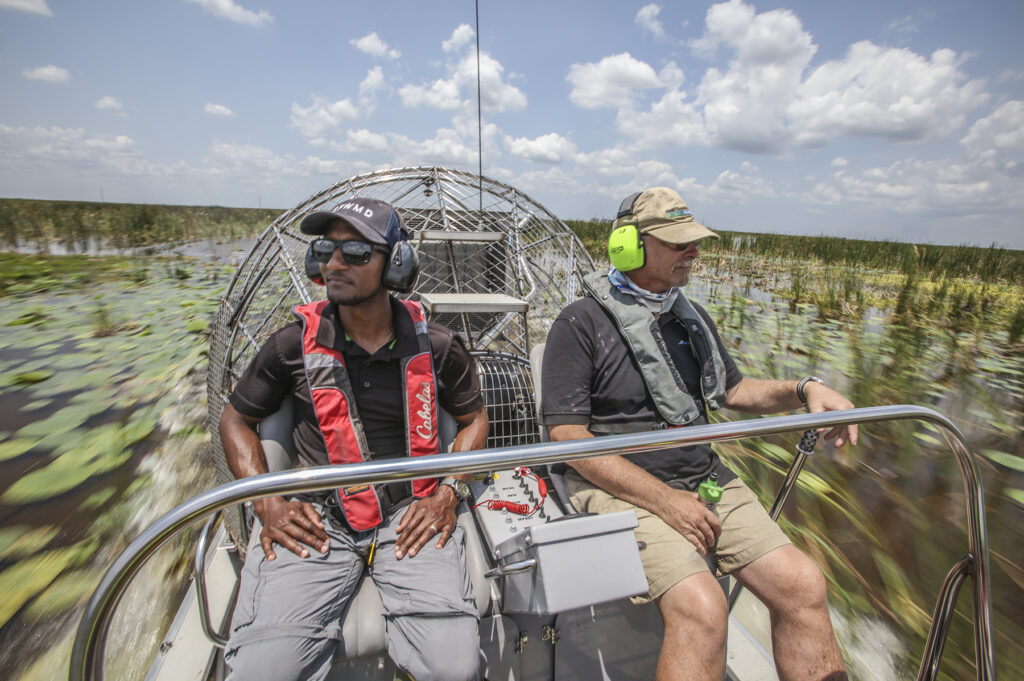
Under an early morning sun, the treatment marshes fill with birds as the brightening air wakes up bugs and ripples with a soft breeze. Alligators slink through the coffee-colored water.
“We are a farm, but we don’t have a crop. We’re the reverse of normal farming,” he said
Instead of adding nutrients to help grow plants, they use plants to suck up and trap nutrient pollution in the water.
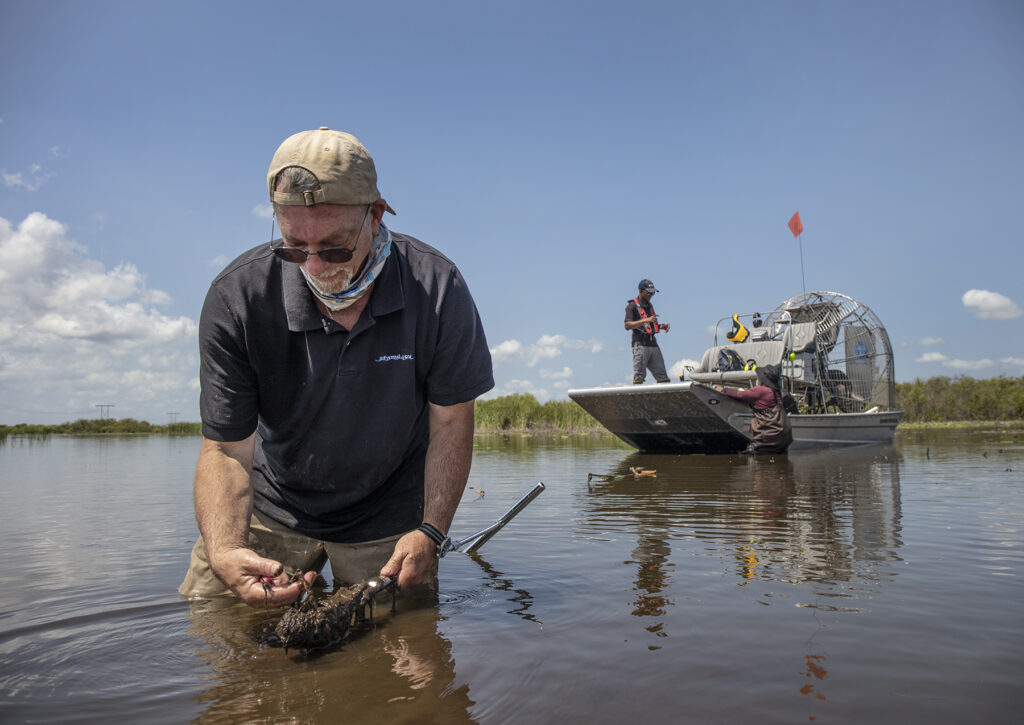
Crawford, 57, and Adeagbo, 35, spend their days on airboats skirting around the marshes. That often means wading into the water where crews hand plant the bullrush to inspect the work.
While the workers toil in water up to waist-deep, Ismael Gerena, the crew chief, keeps watch for gators from the controls of his airboat.
“You don’t know where they’re at because they stay underwater. So you got to constantly watch out for them,” he said.
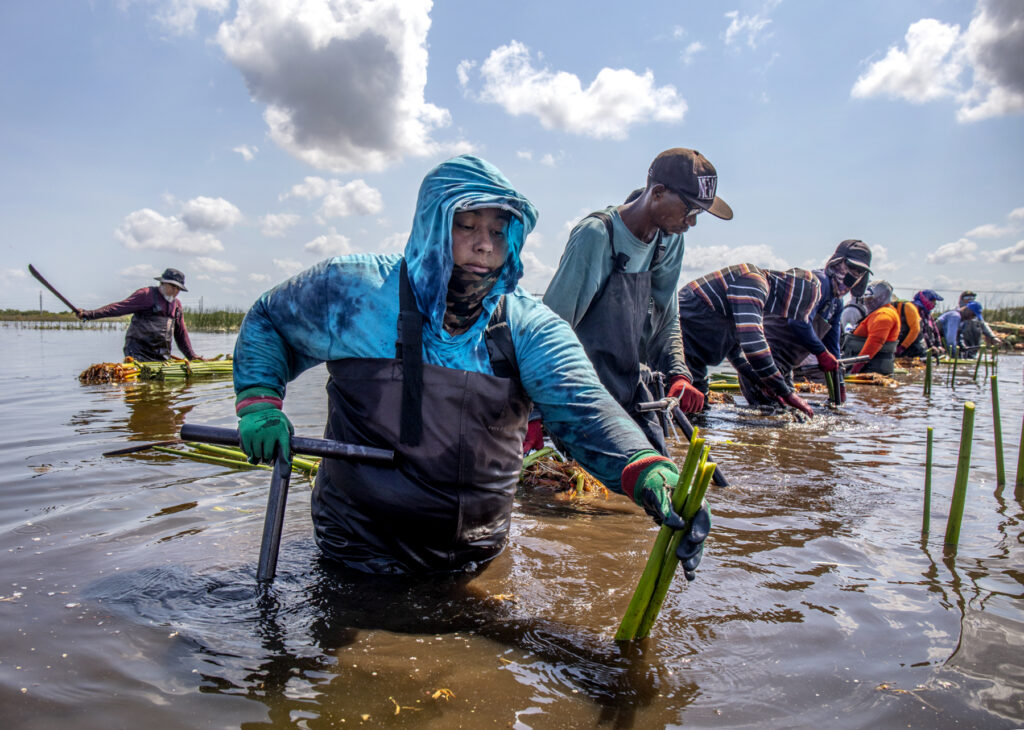
There are also snakes, said Juan Hernandez, 60, who started working in the treatment marshes more than a decade ago.
“Some people quit,” he said. “They try it and [don’t] like it because [there are] snakes, alligators. And it’s hard to walk in here.”
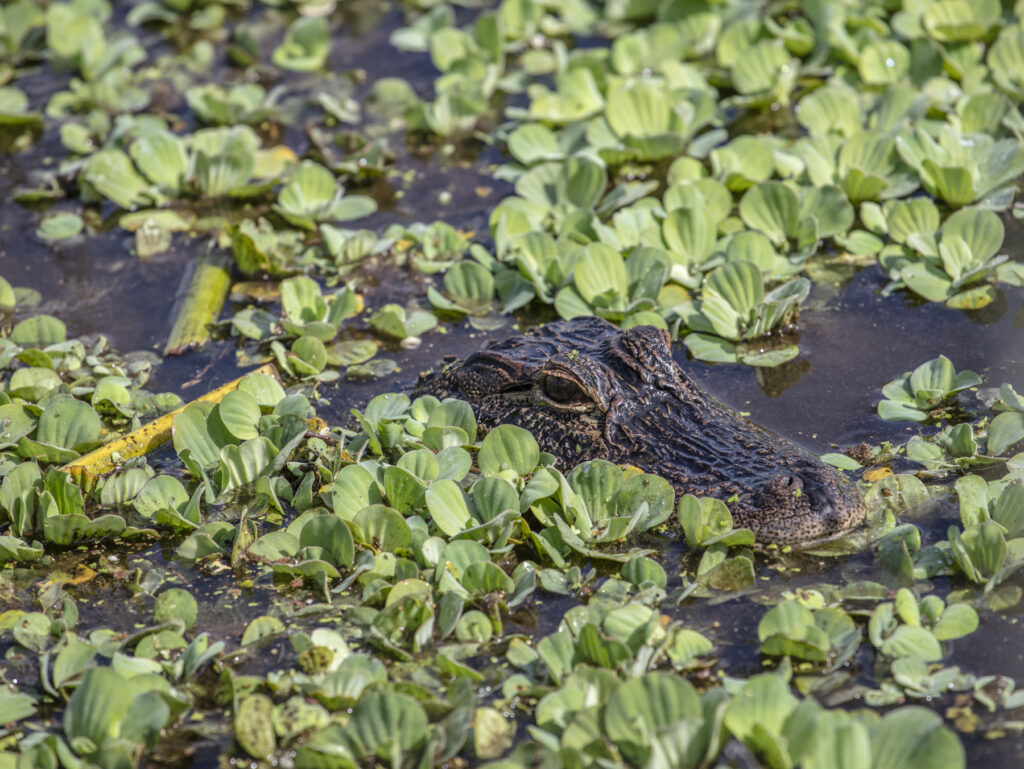
Over the years, the hardworking stormwater treatment marshes have removed millions of tons of phosphorus, dramatically reducing what flows south. But they still consistently fail to reach the limit required under a court-ordered clean-up plan.
And managing them has been no easy task. During storms, they switch to flood control to store high water. That means the careful work Crawford and Adeagbo do on clean-up can get wiped out by a tropical storm.
“You don’t get two different teams,” Crawford said. “You get one piece of land to do both.”
To hear more from Crawford and Adeagbo, listen to episode 3 of Bright Lit Place.
Hydrologist Tom Van Lent
After more than four decades working on Everglades restoration, hydrologist Tom Van Lent is considered among the leading experts on how the swamp works.
“He’s absolutely one of the top hydrologists that’s ever studied the Everglades from a technical perspective,” said hydrologist Robert Johnson, who retired as the director of the National Park Services’ science center where he helped steer restoration for 40 years. “People go to Tom to learn about the Everglades.”
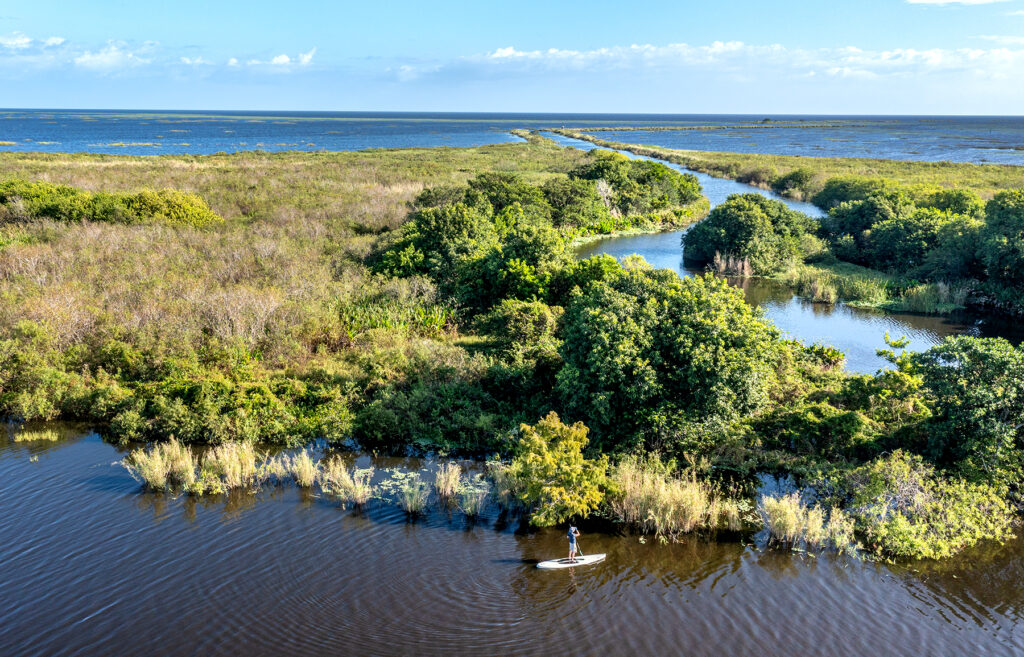
A lawsuit filed by Van Lent’s former bosses at the Everglades Foundation in 2022 now threatens to undo that legacy and send him to jail.
Van Lent, 65, began his Everglades career out of graduate school at the South Florida Water Management District, the state partner in restoration, then moved to the National Park Service’s science center, where he helped create the models that set the course for restoration work.
“My father and grandfather were very good carpenters and they said it’s not the tools that make a good carpenter. And it’s the same with models,” Van Lent. “You have to kind of know how to use them.”
Van Lent’s models helped redefine restoration during final planning for the Comprehensive Everglades Restoration plan passed in 2000, when he argued that benefits to the park would not arrive for three decades. In 2005, the Everglades Foundation convinced him to join the nonprofit to build its science team.
“I was just known for just speaking what I thought and would speak truth to power. And they, at the time, admired that,” he said.
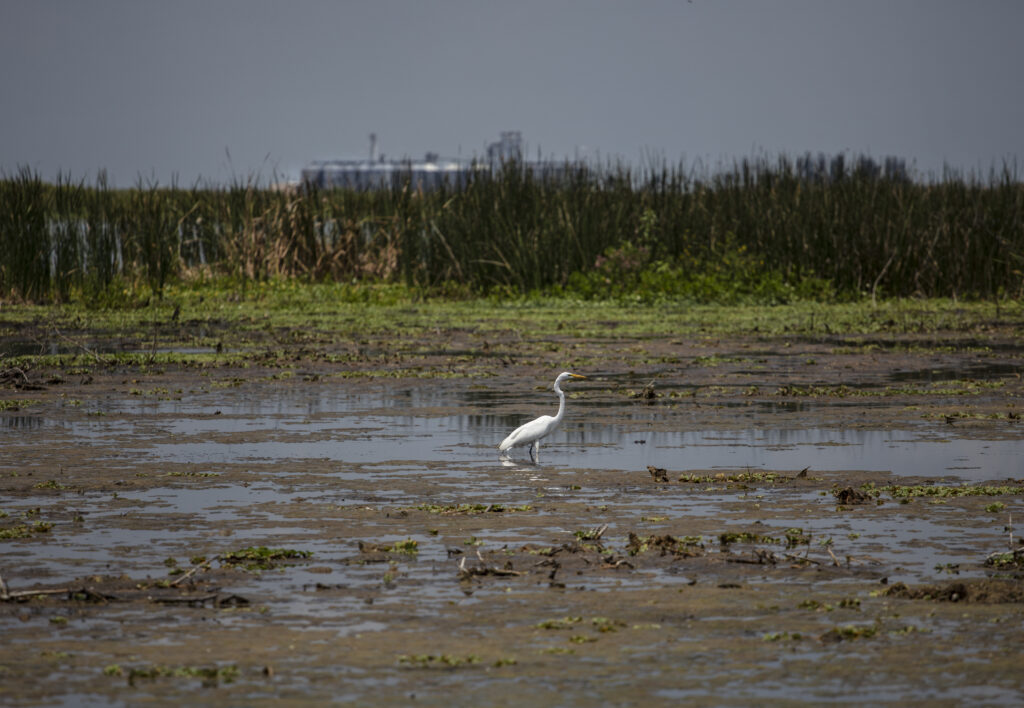
But in 2016, that doggedness got him into trouble when he objected to a controversial Everglades reservoir. After lawmakers dramatically scaled back the original plan from 60,000 acres to 17,000 acres, Van Lent worried treatment marshes were too small to treat the much deeper reservoir. The Army Corps and U.S. Department of Interior also raised objections. The Everglades Coalition, an umbrella group for more than six dozen environmental groups across the state, also objected.
Van Lent stepped aside as chief scientist, he said, as tension worsened.
He finally quit in 2022 and on his last day, tweeted that he was going to work for another conservation group, the Friends of the Everglades, that put “science over politics.” Two weeks later, the Foundation sued, filing a sealed complaint that accused him of stealing trade secrets. A judge ordered him to stop downloading information from any computer and in May found Van Lent violated the injunction. The judge also ordered Van Lent to pay the Foundation’s legal bills, totaling $178,000.
In December, Van Lent filed for bankruptcy. At his December sentencing hearing, his wife Lois, 66, said she’s going back to work.
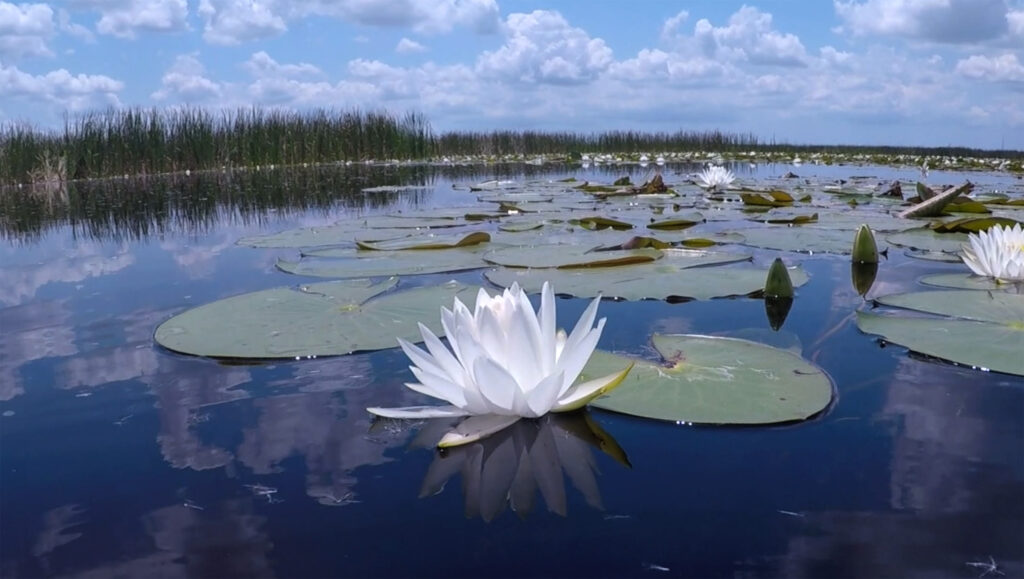
More than two decades ago when he pointed out that flaw in the original restoration plan, Van Lent took a huge risk to ensure restoration was done right, Stuart Pimm, a leading expert in extinction biology, said at the hearing.
“That was a very courageous thing to do academically,” Pimm testified. “It was …even a more courageous thing to do politically and it represented to me the extraordinary commitment to getting the story right and doing the science properly that has characterized everything I’ve seen Tom do.”
To hear more from Van Lent, listen to episode 4 of Bright Lit Place.
Bright Lit Place was produced by WLRN News and distributed by the NPR network, with support from the Pulitzer Center’s Connected Coastlines initiative. Click here for part one of this photo essay.
Sign up for The Invading Sea newsletter by visiting here. If you are interested in submitting an opinion piece to The Invading Sea, email Editor Nathan Crabbe at ncrabbe@fau.edu.



